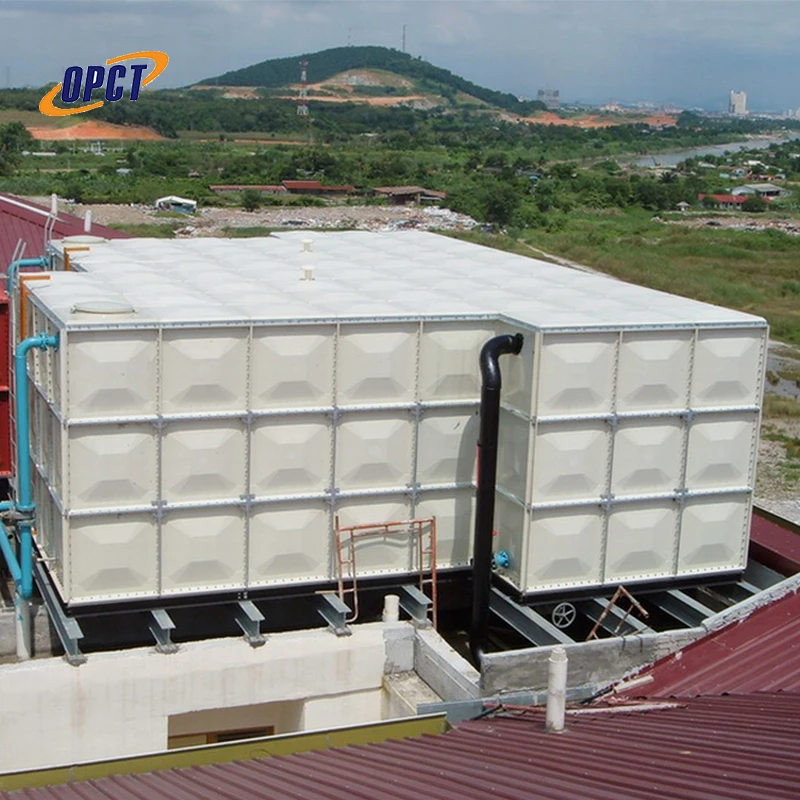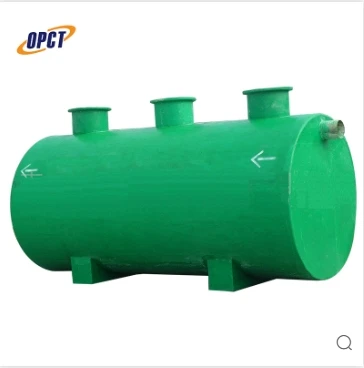In the realm of water storage solutions, GRP (Glass Reinforced Plastic) water tanks have emerged as a game-changer due to their versatility, durability, and efficiency. When searching for the ideal GRP water tank, one of the fundamental considerations is its size. Understanding how to determine the optimal size for your needs not only impacts your immediate water storage requirements but can also significantly affect long-term efficiency and maintenance. This exploration into GRP water tank sizes is designed to equip you with the expertise, insights, and authoritative information needed to make an informed choice.

Selecting the right size of a GRP water tank involves a comprehensive evaluation of several critical factors. Foremost among these is the intended application, as the water storage needs for a residential property will differ significantly from those for agricultural or industrial use. Residential setups might require smaller tanks ranging from 500 to 5,000 liters, which are typically used for rainwater harvesting or emergency water storage. In contrast, commercial or industrial settings may necessitate tanks that can hold upwards of 10,000 liters to ensure a continuous supply and cope with peak demand.
A pivotal aspect of determining the right tank size relates to assessing consumption patterns. For households, this generally involves calculating average daily usage per person, accounting for activities such as bathing, cooking, and cleaning. Estimating peak usage times helps further refine the size requirements. For industries, analyzing peak production periods and understanding processes that demand high water usage is crucial. Being equipped with this data ensures that the water tank is neither undersized, leading to frequent shortages, nor oversized, which could lead to unnecessary expenses and space usage.

Climate plays a critical role in selecting a GRP water tank size. In regions prone to drought or erratic rainfall, a larger tank might be advisable to capture as much runoff as possible during wet seasons, thereby providing a buffer during dry spells. Understanding local weather patterns can thus directly influence efficiency and assure a more reliable water supply year-round.
The material advantages of GRP water tanks also impact size considerations. Unlike metal or plastic counterparts, GRP tanks boast high strength-to-weight ratios, reducing the logistical challenges associated with larger sizes. Their non-corrosive properties ensure longevity, meaning that investment in a larger size is likely to be beneficial over many years without the risk of degradation or contamination. This durability underscores their reliability, particularly in environments where water purity is non-negotiable.
grp water tank sizes
The installation space available for your GRP water tank is another critical determinant of size. Urban settings, with their space constraints, may necessitate vertical tanks or modular designs that maximize capacity without expanding the footprint. Conversely, rural areas may permit sprawling horizontal tanks where space is less of an issue. Understanding spatial dynamics allows for strategic planning in tank placement and integration into existing infrastructure, ensuring optimal operation.
Expert advice is indispensable when choosing the right GRP water tank size. Consultation with professionals can provide insights into designs tailored to specific needs, regulatory compliance, and future-proofing strategies, particularly relevant in anticipated growth scenarios or enhanced environmental regulations. Engaging with experts not only affirms your decision but also enhances trustworthiness in the product’s lifecycle performance.
While focusing on the size and technical aspects of GRP water tanks, environmental impact should not be overlooked. Larger installations should be evaluated on their eco-footprint, with considerations for sustainable sourcing, energy-efficient manufacturing practices, and potential recycling options at the end of their lifespan. This comprehensive approach underscores a commitment to environmental stewardship and responsible resource management.
Ultimately, the choice of a GRP water tank size is a strategic decision that intertwines logistical, environmental, and operational considerations. With the stakes high in terms of resource management and financial investment, having a thorough understanding and authoritative guidance ensures a successful and sustainable outcome. By aligning your needs and expectations with expert advice, the selection of an optimally sized GRP water tank can significantly enhance water management systems, making them a worthwhile addition to any property or operation.




